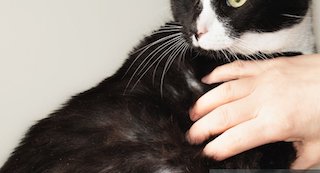Fungal Culture To Diagnose Feline Ringworm

Fungal Culture To Diagnose Feline Ringworm
Ringworm is a common fungal infection in cats caused by dermatophytes, a fungi that thrive on keratin in the skin, hair, and nails. Although it is called ringworm, this condition is not caused by worms but by fungi that lead to characteristic circular patches of hair loss, redness, and scaling on the skin. Feline ringworm is contagious, not only among cats but also to other pets and even humans, which makes early diagnosis and effective treatment crucial.
One of the most reliable methods for diagnosing ringworm in cats is through fungal culture, a laboratory technique used to identify the specific dermatophyte responsible for the infection. This article will delve into the science behind fungal cultures, how they are used to diagnose ringworm in cats, why they are important, and how they compare to other diagnostic methods.
What is fungal culture in feline ringworm?
A fungal culture is a diagnostic test that involves growing fungi from a sample of skin, hair, or nails in a controlled laboratory environment. By allowing the sample to incubate and develop, a fungal culture can help identify the presence of dermatophytes, as well as the specific type of fungus involved. This method is the most accurate way to diagnose feline ringworm and is considered the gold standard for diagnosing dermatophyte infections.
Fungal cultures work by isolating the spores or hyphae of fungi and growing them on a special nutrient medium. Once the fungi grow, they can be identified based on their appearance and the results of biochemical tests. This allows veterinarians to determine not only whether a cat has ringworm but also which species of fungus is causing the infection.
Process of performing fungal culture
Performing a fungal culture for ringworm diagnosis involves several steps. Each step plays a vital role in ensuring that the culture is accurate and reliable. Here’s a detailed overview of the process:
1) Sample collection
The initial step in the fungal culture process is collecting a sample from the affected cat. The sample typically includes hair, skin scrapings, or nail clippings from areas of the skin that show symptoms of ringworm, such as hair loss, redness, scaling, or inflammation. The veterinarian will use sterile tools to collect the sample to avoid contamination from other fungi or bacteria that may be present in the environment.
-
-
-
- Hair sample: In most cases, hair is collected from the edges of the ringworm lesions. Hair follicles are often where the dermatophytes thrive, so this sample is the most commonly used.
- Skin scraping: For areas where hair loss has already occurred, skin scrapings are sometimes used to collect the infected layer of skin cells.
- Nail clippings: If the cat’s nails are involved, nail clippings may be taken, especially if the infection extends to the claws or paw pads.
-
-
The samples are placed into a sterile container and sent to a veterinary laboratory for incubation.
2) Incubation and culturing
Once the samples are received in the laboratory, they are placed on a specialised growth medium known as Sabouraud’s dextrose agar or Dermatophyte test medium. These media are designed to encourage the growth of dermatophytes while suppressing the growth of bacteria and other fungi that may be present.
The samples are incubated in a warm environment for a period of 7 to 14 days. During this time, any fungal spores present in the sample will begin to grow, forming visible colonies. The growth of the dermatophyte can take time, depending on the specific fungus and environmental conditions.
Dermatophytes are slow-growing fungi, so it can take a few weeks before they are detectable by culture. The laboratory will monitor the samples regularly to check for any fungal growth.
3) Identification of fungal growth
After the incubation period, the fungal colonies are examined under a microscope and visually inspected for their characteristic growth patterns. Dermatophytes often form distinctive colony types on the agar, which can help the lab technician identify the type of fungus present. Common characteristics include:
-
-
-
- Colour: Dermatophyte colonies may vary in color from white to yellow, green, or red, depending on the species.
- Texture: The texture of the colony may be fluffy or powdery, with edges that may appear scalloped or irregular.
- Radial growth: Dermatophytes tend to grow in circular patterns, which may resemble the ring-shaped lesions on the cat’s skin.
-
-
Further testing may be needed to confirm the identity of the fungus, such as microscopic examination or biochemical tests to differentiate between species.
4) Confirmation and diagnosis
Once the fungi are identified, the laboratory will report the findings to the veterinarian. If dermatophytes are confirmed, the specific species of fungus will be identified.
Based on the results, the veterinarian will confirm whether the cat has ringworm, determine the type of fungus causing the infection, and decide on the appropriate treatment. In addition, knowing the specific fungus helps predict how contagious the infection may be to other animals or humans.
Why Is fungal culture important in diagnosing ringworm in cats?
Fungal culture is considered the gold standard for diagnosing ringworm for several reasons:
1) Accuracy: Fungal cultures are one of the most accurate ways to confirm the presence of dermatophytes in a cat’s skin. Unlike other diagnostic methods, fungal cultures provide definitive proof of infection. Cultures can detect even small amounts of fungal material, which makes them highly sensitive and reliable.
2) Species identification: Fungal cultures allow the veterinarian to identify the specific species of dermatophyte involved. Different species may have different treatment protocols or may vary in terms of how easily they spread. For instance, Microsporum canis is the most common cause of ringworm in cats and is highly contagious to humans, while Trichophyton mentagrophytes tends to be less common in cats and more likely to affect dogs.
3) Differentiation from other conditions: Many skin conditions in cats can cause symptoms that resemble ringworm, such as hair loss, scabs, or inflammation. Fungal culture helps differentiate ringworm from other dermatological issues, such as bacterial infections, flea infestations, or allergic reactions, which may present similar signs.
4) Confirmation of cure: After a cat has undergone treatment for ringworm, a follow-up fungal culture can be performed to confirm that the infection has been successfully eradicated. This is important for ensuring that the infection has been fully treated and that the cat is no longer contagious to other animals or humans.
Other diagnostic methods for ringworm in cats
While fungal culture is the most reliable method for diagnosing ringworm in cats, several other diagnostic tests may be used in conjunction with or as alternatives to fungal culture. These include:
1) Wood’s lamp examination: Wood’s lamp is a UV light that causes certain dermatophytes, particularly Microsporum canis, to fluoresce. While this test can be helpful in identifying potential ringworm, it is not foolproof. Only some strains of Microsporum canis will fluoresce under a Wood’s Lamp, and other conditions may also cause fluorescence.
2) Microscopic examination of hair or skin samples: A veterinarian may collect skin scrapings or hair samples from the affected areas and examine them under a microscope for the presence of fungal spores or hyphae. While this method can provide quick results, it may not always be accurate, as not all dermatophytes are readily visible under a microscope.
3) Polymerase chain reaction testing: PCR testing can identify fungal DNA in a sample and is a highly accurate way to diagnose ringworm. This test is relatively new and is not as widely used in routine veterinary practice due to its cost and complexity. However, it can be valuable for confirming difficult-to-diagnose cases.
4) Dermatophyte test medium: DTM is a special agar used to culture dermatophytes, similar to Sabouraud’s dextrose agar. The medium contains a pH indicator that changes color when dermatophytes are present, turning from yellow to red as the fungi grow. DTM is widely used in veterinary clinics and can provide a preliminary diagnosis of ringworm. However, it may not always be as reliable as fungal cultures, which are more comprehensive.
Treatment of ringworm in cats
Once ringworm is diagnosed through fungal culture, treatment options will be recommended based on the type and severity of the infection. Common treatment methods include:
1) Topical anti fungal treatments: Medicated creams, shampoos, or ointments can be applied to the affected areas of the skin. These may contain anti fungal agents such as miconazole, ketoconazole, or lime sulfur.
2) Oral anti fungal medications: For widespread or severe infections, oral anti fungal medications such as griseofulvin or itraconazole may be prescribed.
3) Environmental decontamination: Fungal spores are hardy and can survive in the environment for months. It’s important to clean the home thoroughly, wash bedding, and disinfect surfaces to prevent re-infection.
Better diagnosis
Fungal culture is an essential tool for diagnosing ringworm in cats. It offers accurate, reliable results and can identify the specific dermatophyte responsible for the infection. Early diagnosis and appropriate treatment of ringworm are critical to preventing the spread of this contagious fungal infection. While other diagnostic methods may be used in conjunction with fungal culture, this method remains the gold standard for confirming a diagnosis of feline ringworm. By understanding how fungal cultures work and their role in diagnosis, pet owners and veterinarians can better manage and treat this common condition, ensuring the health and well-being of cats and their owners.



